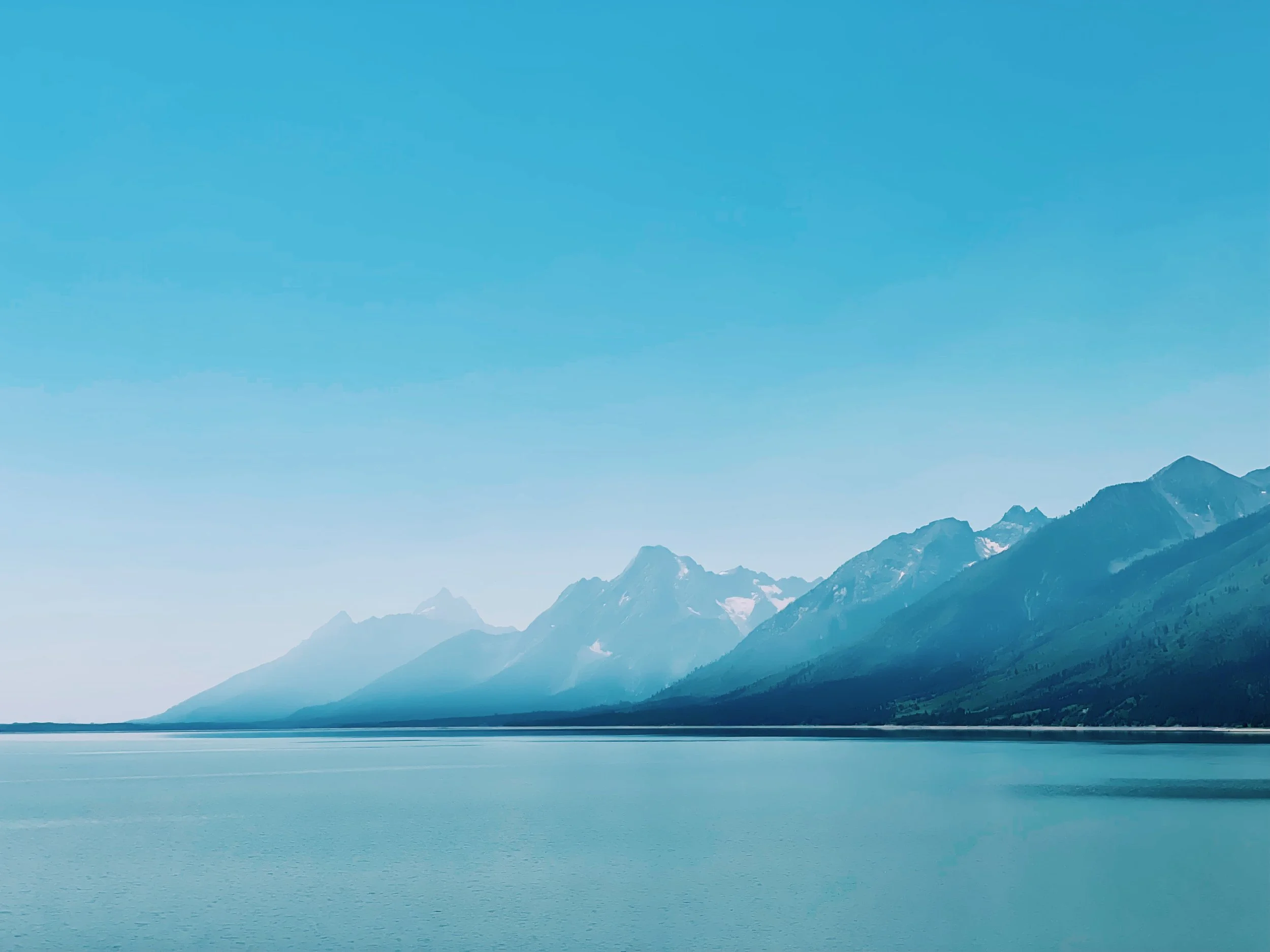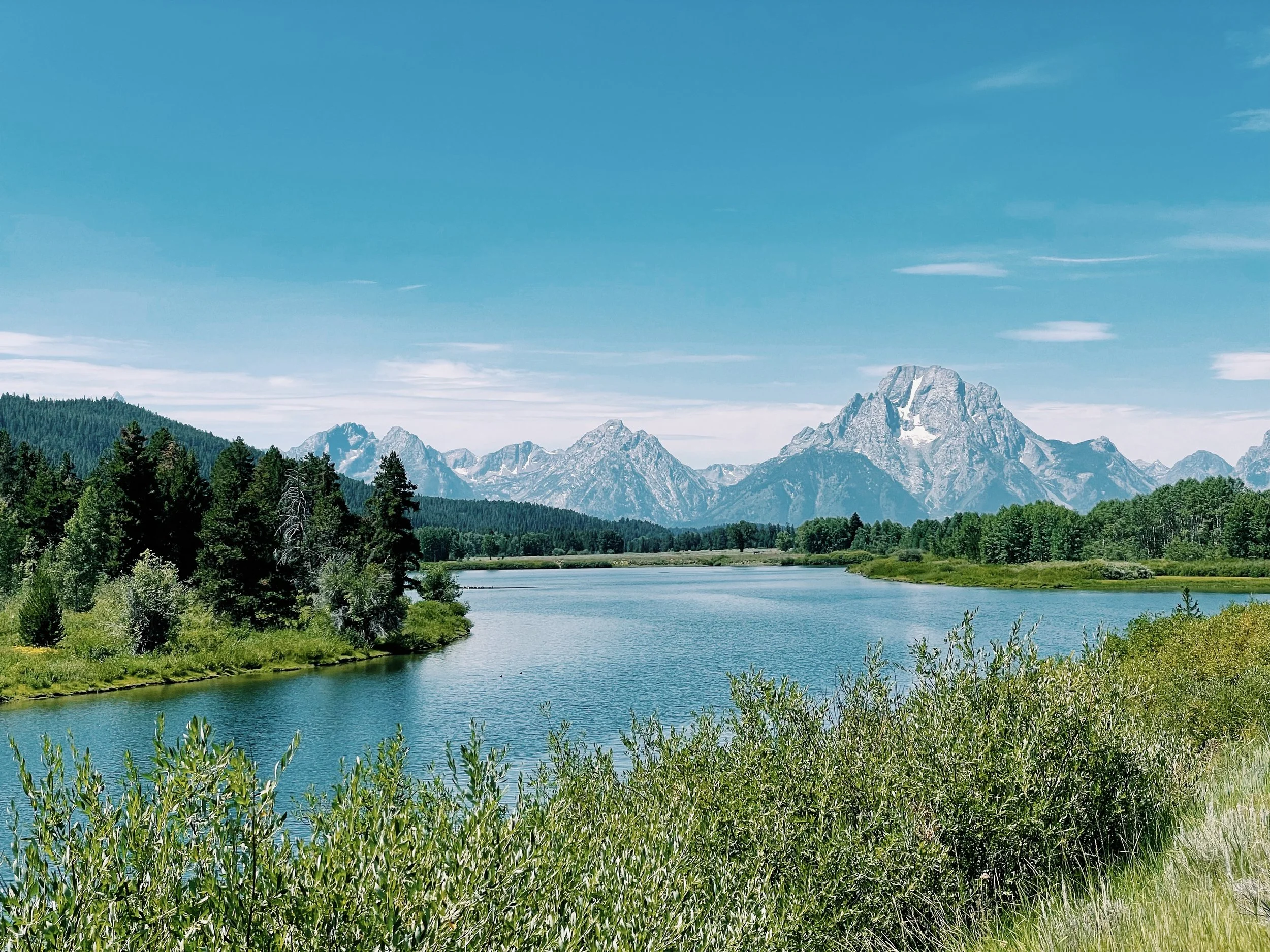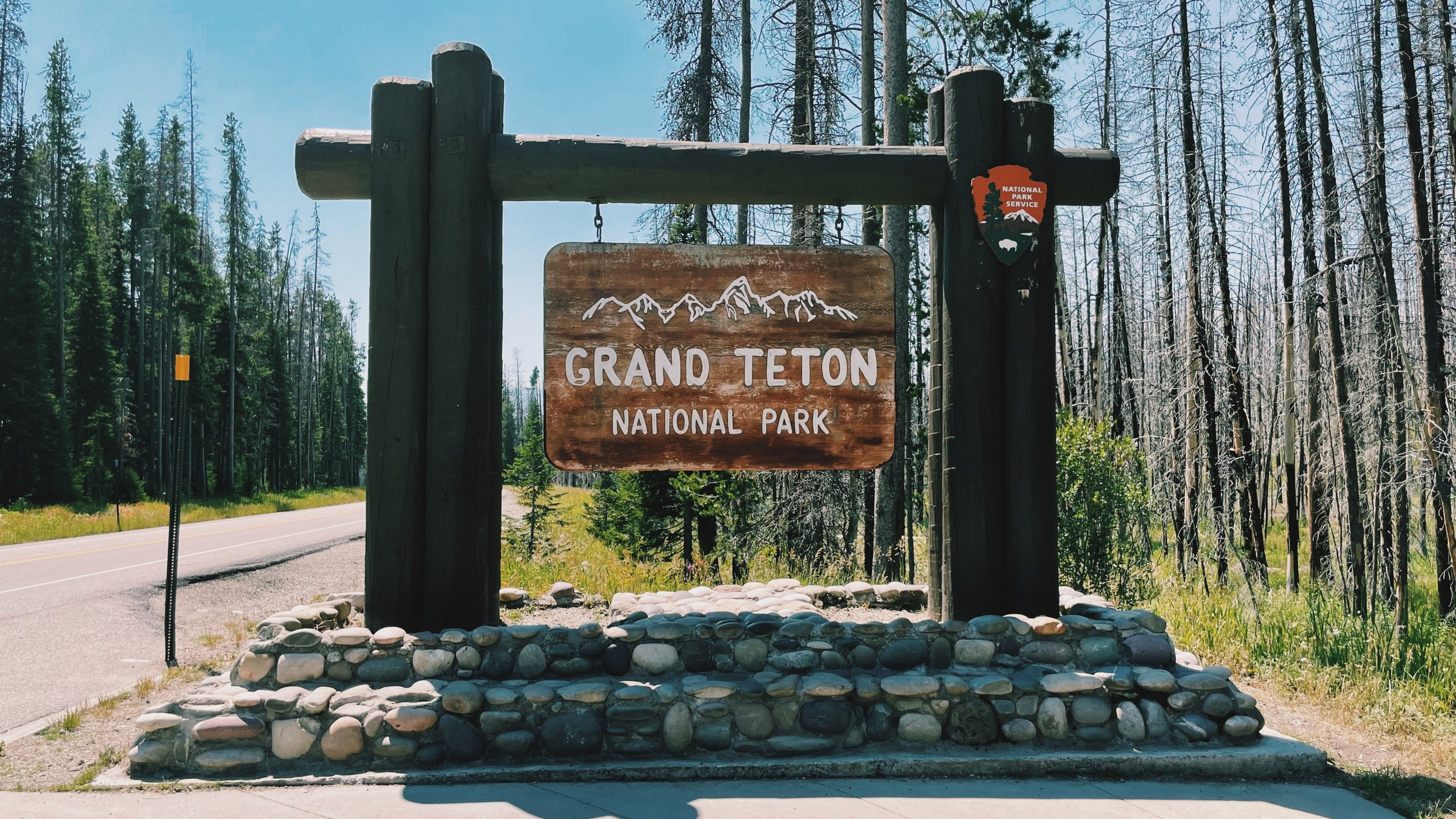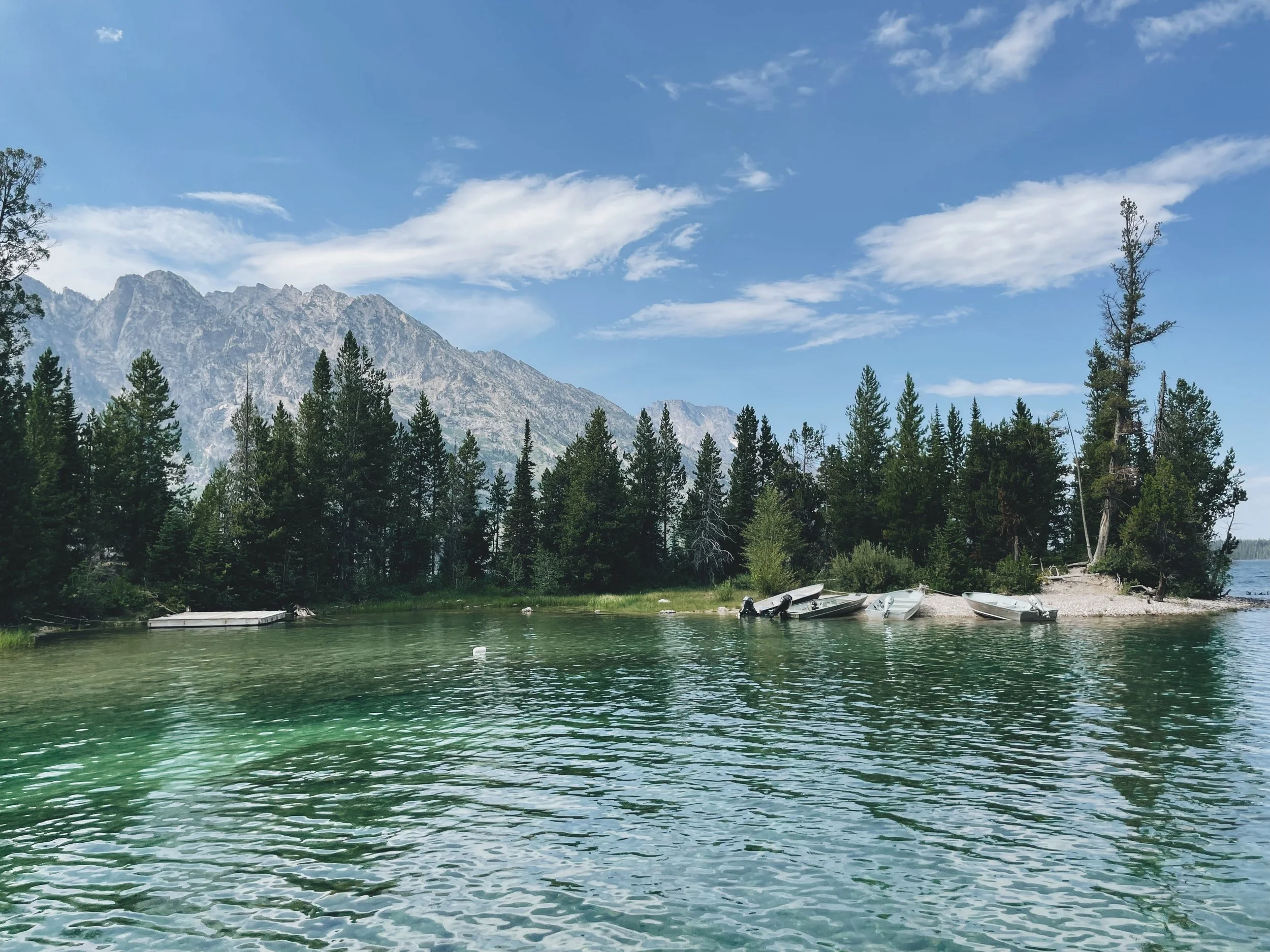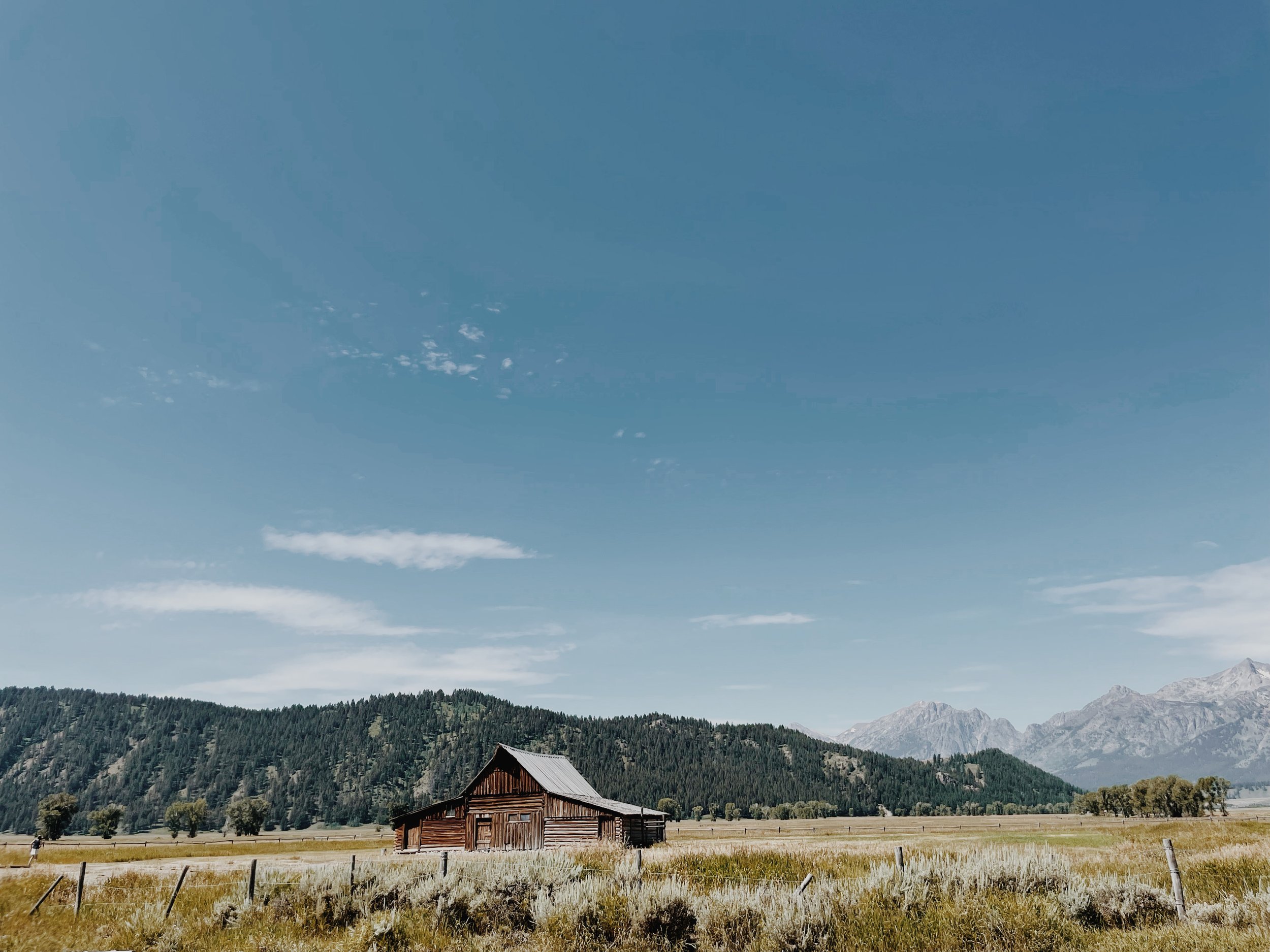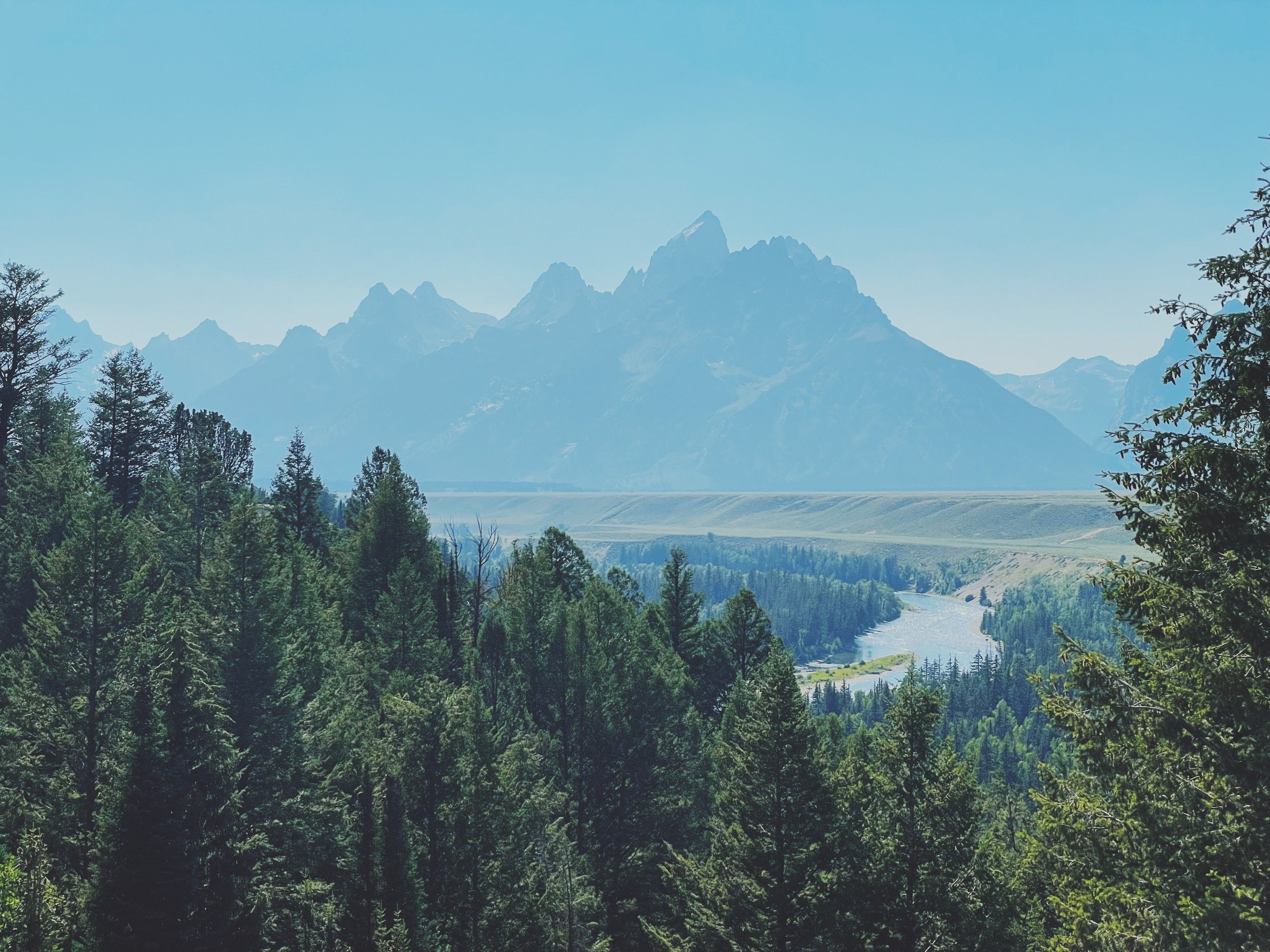Field Notes: Journey Through Grand Teton National Park.
Teton Range overlooking Jackson Lake
I'm an affiliate, meaning I partner with brands and earn a commission if you purchase through the links on my site. This helps support my website.
How Was the Teton Range Formed?
The Grand Teton Range was formed over millions of years by tectonic plates colliding. The intense pressure from this collision uplifted the Earth's crust, creating towering peaks. Subsequent faulting and erosion, including the action of glaciers during the last Ice Age, further sculpted the rugged landscape. This combination of geological processes shaped the iconic and dramatic terrain of the Tetons we admire today.
Unique Features of the Grand Teton Range.
The Grand Teton Range, often called the Tetons, is a mountain range in the western United States, specifically in Wyoming. It is part of the Rocky Mountains and is known for its dramatic peaks and stunning scenery.
The highest peak in the Grand Teton Range is also called Grand Teton, which stands at 13,775 feet (4,199 meters) above sea level. This range boasts one of the most significant vertical reliefs in the contiguous United States, forging a stark contrast between the low-lying valleys and the sky-piercing summits. The rugged terrain, adorned with crystalline lakes and verdant meadows, forms a picturesque landscape of unparalleled beauty.
History of Grand Teton National Park.
Grand Teton National Park was established in 1929, mainly due to the efforts of conservationists and concerned citizens who recognized the unique and irreplaceable natural beauty of the Grand Teton Range and its surrounding environment.
In the late 19th and early 20th centuries, there were increasing concerns about the potential development and commercialization of the area around the Grand Tetons. Conservationists like John D. Rockefeller Jr. and others became instrumental in the preservation efforts. Rockefeller purchased large tracts of land to donate to the federal government for conservation purposes.
On February 26, 1929, President Calvin Coolidge signed a bill establishing Grand Teton National Park. This action protected approximately 96,000 acres of land, which included the Grand Teton Range and the surrounding ecosystems.
The park's establishment was driven by a desire to preserve the natural beauty, wildlife habitats, and recreational opportunities of the area for future generations. It also ensured that the unique and iconic landscape of the Grand Teton Range would be safeguarded from extensive development and commercial exploitation. Today, Grand Teton National Park remains a testament to the vision and dedication of those who worked to protect this extraordinary natural treasure.
Top Attractions in Grand Teton.
Jenny Lake with the Tetons in the background
Jenny Lake: This stunning glacial lake offers hiking trails, boat rentals, and a scenic boat shuttle to Hidden Falls and Inspiration Point.
Mormon Row: This historic district features iconic homesteads with the Teton Range as a backdrop, providing excellent photo opportunities.
Cascade Canyon: Accessible from Jenny Lake, this popular hiking destination offers breathtaking views of the Tetons and opportunities for wildlife sightings.
Schwabacher's Landing: Known for its iconic view of the Teton Range reflected in the Snake River, this spot is famous for photography, especially during sunrise.
Oxbow Bend: Another picturesque location along the Snake River, offering stunning views of the mountains and excellent wildlife viewing.
Signal Mountain: Drive or hike for panoramic views of the entire Teton Range and Jackson Hole Valley.
String Lake: A serene lake perfect for kayaking, canoeing, or simply relaxing on its shores with a picnic.
Taggart Lake: Accessible via a scenic trail, forests surround this beautiful alpine lake and offers a peaceful setting for picnics or a refreshing dip.
Colter Bay Visitor Center: Offers exhibits on the natural and cultural history of the area, as well as information on ranger-led programs and activities.
Colter Bay: A picturesque area on Jackson Lake with a marina, visitor center, campground, and opportunities for water activities and hiking.
Laurence S. Rockefeller Preserve: This area features peaceful trails, wetlands, and a visitor center, allowing for a tranquil nature experience.
T.A. Moulton barn of Mormon Row
Where to Stay in Grand Teton.
Lodges and Cabins Inside the Park:
Jackson Lake Lodge: This iconic lodge offers stunning views of Jackson Lake and the Teton Range. It has comfortable rooms, dining options, and amenities.
Signal Mountain Lodge: Situated on the shores of Jackson Lake, this lodge provides a range of accommodation options, including cabins, rooms, and camping. It's known for its spectacular views.
Campgrounds Inside the Park:
Jenny Lake Campground: A popular campground located near Jenny Lake. It's known for its scenic location and proximity to various hiking trails.
Colter Bay Campground: Situated on the shores of Jackson Lake, this campground offers a range of camping options, including tent sites and RV hookups.
Lodging in Jackson, Wyoming:
Town of Jackson: This vibrant town is located just south of the park and offers many accommodation options, including hotels, motels, inns, and vacation rentals. It also has a variety of restaurants and shops.
Teton Village: Located at the base of the Jackson Hole Mountain Resort, this area offers upscale lodging options, including hotels, condos, and vacation rentals. It's a popular choice for those interested in outdoor activities and skiing in winter.
Nearby National Forests and Wilderness Areas:
Bridger-Teton National Forest: Offers a range of camping options and some cabins for rent. It's a good choice for those seeking a more rustic experience.
RV Parks and Campgrounds:
Various RV parks and campgrounds are inside and outside the park, catering to recreational vehicle travelers.
If camping is or isn’t your thing, you should read our blog post, Discover the Reasons to Camp Near Grand Teton National Park (Jackson Hole).
Elk-antler arch in downtown Jackson, WY
Entrance Fees for Grand Teton National Park.
There is a fee to enter the park. Some of that fee goes back into the park to help preserve, maintain, and fund projects that help with your experience there. Depending on the vehicle or if you are on foot, the fee ranges between $25.00-$35.00. here is a link to purchase the pass. If you plan to visit multiple National Parks throughout the year, we recommend the annual pass for $80.00. You can purchase this pass here.
If you will be visiting multiple parks throughout the year, we recommend purchasing the yearly pass, United States National Park Pass, officially known as the "America the Beautiful, for $80.00. This pass provides access to more than 2,000 federal recreation sites, including national parks, national forests, wildlife refuges, and more. This pass is a cost-effective way for individuals and families to enjoy the diverse natural and cultural resources across the United States. This pass can be purchased by visiting this link.
Hidden Gems in Grand Teton.
You might miss a few enjoyable things if you are unaware of what you might enjoy. Below are our favorites.
Huckleberry ice cream is a must-try. It is available at most general stores, The Old Faithful Inn, and Canyon Village.
The General Stores throughout Yellowstone are great places to stop in. They sell local goods, great souvenirs, and a gas station.
Get a passport stamp book. I didn't know about these until we saw them in one of the General Stores. But, they are fun even as an adult. Each visitor center has an individual stamp for that attraction with the date on it.
The Hidden Gem for All National Park Trips: Guide Along.
Guide Along is an invaluable resource. Our car tour guide shared intricate details along the route that we might have otherwise missed. It serves as a beautiful interlude during the journey to various attractions. What stood out most was the guide's knack for unveiling hidden gems off the typical path, enriching our experience in ways we wouldn't have discovered independently. And he has a great voice, too. Click the banner below to purchase Grand Teton National Park Guide Along.
Exploring Grand Teton National Park: Final Thoughts.
Grand Teton National Park was far beyond my expectations. Every moment in this natural haven has left an indelible mark, from the towering peaks to the lakes. The park's rich biodiversity and stunning vistas have reminded us of the importance of preserving our natural heritage. There is this old-west vibe to the area, which is fantastic. It is indeed a unique place in our world. It is a very different experience than Yellowstone National Park. However, I recommend tackling them both while you are in this direction. They are so close. We did it in a week.
Grand Teton vs. Yellowstone: Key Differences.
Yellowstone National Park and Grand Teton National Park, while located nearby and often visited together, offer distinct experiences due to their unique geological features and ecosystems. My summary in analogies: Yellowstone is Disney World, and Grand Teton is John Wayne. While in the area, I highly recommend visiting them both.
Geology and Landscape:
Yellowstone: Known for its geothermal wonders, Yellowstone is home to hot springs, geysers (including the famous Old Faithful), mud pots, and fumaroles. The park sits atop a supervolcano, creating a landscape with otherworldly features.
Grand Teton National Park: In contrast, Grand Teton National Park is characterized by its dramatic mountain range, sharp, towering peaks, and rugged terrain. While it does have some geothermal features, they are not as prominent as in Yellowstone.
Wildlife and Ecosystems:
Yellowstone: Known as the first national park in the world, Yellowstone boasts a diverse range of wildlife, including bison, elk, grizzly bears, wolves, and various bird species. The park's vast expanse of wilderness provides a habitat for these creatures.
Grand Teton National Park: While rich in wildlife, Grand Teton National Park is especially renowned for its impressive population of charismatic megafauna, such as moose, elk, and bears. The rugged terrain creates ideal habitats for these animals.
Recreation and Activities:
Yellowstone: Offers a wide range of activities, including hiking, wildlife viewing, fishing, camping, and various ranger-led programs. Water-based activities like boating and fishing are popular due to the numerous lakes and rivers.
Grand Teton: Similarly, Grand Teton National Park offers hiking, wildlife viewing, and water-based activities, but it is primarily known for its excellent opportunities for mountaineering and rock climbing due to its challenging terrain.
I recommend reading our article on Yellowstone: Travel Notes: Yellowstone National Park. Additionally, Lewis Lake Campground is a campground between the two parks. It sits in Yellowstone National Park. You can read our article All you need to know about Lewis Lake Campground.
Don’t forget your National Park Passport Stamp Book.
This is my passport stamp book.
You can stop in and get your passport stamp at all National Park visitor centers for the attractions and the park. The stamp date will be that day’s date. It is a great and fun way to capture that moment during your visit. It is super fun. It is excellent for kids and even adults. They do sell them at most National Parks. What most National Parks don’t have are the stickers. I recommend ordering those in advance so that you can stamp over them. You can purchase the book and the stickers here.

